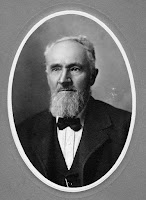Halloween is almost here and it is time for some ghost stories. Let's revisit a few places in Medina County to help you get into the spirit of this spooky holiday!
Please remember these stories are just local folklore. My
information is not based on fact, only hearsay and newspaper articles. However, you will see a few places that I have done some minimal research and have updated the information.
MEDINA
This Victorian Home has had many names in the past 130 years. It is said that Nelson Burnham built the house in the late 1880's and it was known as the Burnham Home. The interior of the house was arranged at the direction of Mrs. Burnham herself who desired the structure to be one of convenience. Through the years it has been…The Homestead Restaurant, Great Expectations, Penny’s Poorhouse and it is now The Corkscrew Saloon. The spirits seemed to start making themselves known when it was Penny’s Poorhouse. Penny Codarini, the former owner, was always happy to talk about the haunting and felt that they must be children, due to the prankish types of incidents. Her and her husband experienced moved furniture, missing items, someone walking up and down the stairs and she even heard her name being called.
The last time I was there I heard this story…They were setting up one of the upper rooms for a private dinner party. The table was all set with napkins and silverware and when the server came back up to make sure nothing was forgotten the silverware was all a mess and salt was spread all over the table….Like Penny said…Childish Pranks!
 |
| Medina Gazette, 10 March 1882, p. 5 |
I did find an obituary for the original owner Mr. Nelson T. Burnham. It states he died in the home, and according to other records, just when it was being completed. Maybe he is still there....
Spitzer House Bed & Breakfast
The Medina Library
Note: The Franklin Sylvester Room is no longer a room at the library. A renovation was done and the resources were moved into what is now the “Local History Room”.
The 1907 Room
This room is the original part of the library. When a local ghost hunter group did a program here at the library a group of people went into the 1907 room. They were able to get responses to questions on a lighted meter. It seems that a young man may be in this room. Others have felt a “presence” in this room…come and see if you do.
Sérénité fka The Medina Steak House & Saloon
 |
| Medina Gazette, 9 March 1906, p. 8 |
 |
| Medina Gazette, 24 July 1945, p. 1 |
LIVERPOOL
Cry Baby Bridge – Abbeyville Road
The story goes that in the 1950’s a young girl threw her baby off the bridge in an effort to hide her pregnancy. Supposedly if you park under the bridge and turn off your car it will not start again until it is pushed out from under the bridge. It is also reported that you can hear a baby crying whenever it is a silent night.
The Witches Ball – Myrtle Hill Cemetery
There are two legends associated with this grave site. The first one is that there was a witch who practiced witchcraft near Myrtle Hill and was stoned by the townspeople. The second story is that there was an insane woman who poisoned her family and threw them down a well. In either case, it is said she is buried beneath the ball and some say that she was buried standing up. They say that the ball is warm when it is cold outside and cold when it is hot outside. It also is said that snow and leaves will never fall on the tombstone. Others have reported an eerie feeling of being watched while standing near the marker. The marker is actually just a unique stone marking the final resting place for the Stoskopf family.
RIVER STYX - GUILFORD TOWNSHIP
River Styx Railroad Bridge**
On March 22, 1899, Railroad Engineer Alexander Logan ran Train No. 5 along the Erie Railroad near the River Styx Bridge, traveling at nearly 80 mph. He would never meet his destination. The engine mysteriously jumped its tracks, turned over and crushed the engineer to death. No one knows what caused the train to derail, but most agree that Logan’s heroic decision to stay on the train and steer the engine saved the lives of others on board. Witnesses say that when Logan’s body was later recovered, his hand was still clutched to the throttle. Two weeks before this tragic accident, Logan confided to his colleagues that he believed he would die on that engine. Since the fatal accident, strange events have been reported on and near the River Styx Bridge. Just a few months later a local doctor and his friend witnessed a phantom train plunge from the bridge covered in flames. They said they actually heard the passengers screaming. However, when they reached the bridge to help, the train was gone. Some have been foolish enough to walk the trestle and were cut into pieces from on-coming trains and the bridge has been the site of some suicides. In addition, a strange fog has been seen to suddenly appear, and there have been a high number of car accidents on River Styx Road below the bridge, involving people who claimed to have seen something falling from the bridge. Are all of these strange incidents related to the 1899 train disaster? Or is there something much older and sinister at work here?
**After further research it has been shown that the train accident did not happen on the River Styx train trestle in Medina County...it actually happened 6 miles south on the River Styx train trestle in Rittman, Wayne County. Right name...wrong county.




























